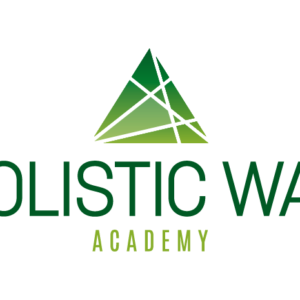
Description
Holistic Body Massage Course by Holistic Way Academy
This course is a Level 3 qualification with an accredited diploma in massage, which contains both theory and practical sessions. Apart from practical sessions, which will take place during weekends, the course consists of online theory sessions, including the following modules: Anatomy, Physiology, Pathology; Business&Management; Health&Safety. There are no entry requirements for this course.
During the course, the student will learn about the nature of muscle’s work (origins and insertions of the muscle), the agonist/antagonist rule (the relation between the muscles that are opposite ex. biceps vs triceps; hamstrings vs quadriceps) and the co-dependencies between different groups of muscles which are co-related (ex. lower back muscles with gluteal muscles and hamstrings).
This course also elucidates a holistic aspect of a massage; the student will learn about the whole range of factors that influence the stiffness of the muscles (both physical and stress-related ones – including natural supplements and elements of bioenergy therapy). If we are going strictly by therapeutic terms, all massage will give a physical response. In addition, the muscles and nervous system will respond to the treatment, and the treated individual will likely feel an emotional and mental response. After all, touch and human contact with positive intent are healing in itself, and the prolonged contact of a massage can be very soothing for the spirit.
Course Content
Theory Sessions – Online
Apart from practical sessions, which will take place during the weekends, the course consists of online theory sessions, including the following modules: Anatomy, Physiology, Pathology; Business&Management; Health&Safety.
The theory sessions can be completed prior to attending any of the practical sessions, or they can be accomplished at the same time when you perform the practice.
Practical Sessions – during weekends (or weekdays)
The practical sessions take place over four weekends. Once the case studies and written assignments have been submitted at the end of the course, there is a final examination.
Case Studies & Assessments
In order to complete the course, you are required to perform 9 case studies (3 treatments on three different people, each treatment a week ahead).
Once complete all modules and case studies, you will receive a Level 3 Diploma in Holistic Body Massage with the accreditation of Think Tree Hub.
The theory sessions cover the following topics:
- Anatomy, Physiology, & Pathology
- Business & Management
- Health & Safety
- History and philosophy of massage
- Benefits of massage (physical and psychological)
Practical sessions include:
- Introduction to the massage (preparation for treatment, client interview, consultation form, therapist posture)
- Basic strokes of classical massage (effleurage, rubbing, petrissage, friction, squeezing, tapotement, vibration, shaking)
- MET technique – muscle energy technique
- PRT – positional release technique
- NMT – neuromuscular technique, trigger points
- BioEnergy Technique (energy work as a Therapist)
- The techniques for dealing with stress (elements of anti-stress therapy – the importance of mindset, anti-inflammatory fatty acids, stretching, etc.)
Breakdown of the Practical Classes:
- Pre-treatment tasks – interview with the client, consultation form, potential contraindications
- Observation and palpation (human body charts with markings – range of movement, muscles’ stiffness etc.)
- Initiation of the massage: connection and grounding with the client
- Correct body posture of the Therapist
- Practical use of different applicators (palms, heel of palm, fingers, thumbs, reinforced thumbs, forearm, elbow)
- Massage Routine – Massage Strokes:
- Effleurage: Gliding strokes with the palms thumbs; brisk effleurage
- Rubbing – Circular movement with thumbs, fingers
- Petrissage: Kneading movements with the palms, thumbs, fingers
- Compression and Friction: Circular pressures with the palms of hands, thumbs, fingers
- Vibration: Vibratory movements that shake or oscillate the body
- Percussion: Brisk cupping, hacking or tapping
- Active and Passive movements: Stretching and bending
- MET – muscle energy technique (uses a muscle’s energy in the form of gentle isometric contractions to relax the muscles)
- PRT – Positioning Release Technique – manual technique (muscle spasm and chronic pain)
- NMT – Neuromuscular Technique – alternating levels of concentrated pressure on the areas of muscle spasm
- BioEnergy Technique – implementation of the energy work during the treatment
- Application to the Back
- Application to the Arms
- Application to the Lower extremities (including MET)
- Application to the Head & Neck & Shoulders (including NMT, PRT)
- Application to the Abdomen
- Application to the Chest
- Application to the Hands (including MET, PRT, NMT)
- Application to the Feet
- Application of energy work during the treatment (Bio Energy Therapy)
Contact
E: info@holisticwayacademy.com
T: 07767139220